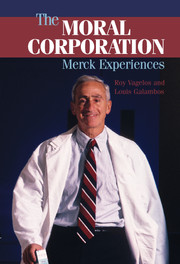5 - Corporate Grooming
Published online by Cambridge University Press: 05 June 2012
Summary
As my ten-year anniversary as head of the merck Research Laboratories approached, Diana and I realized we were facing another turning point in our lives. Several Merck projects were coming to fruition. Most of our research and development teams now had strong leadership. As I passed my fifty-third birthday, Diana and I began to talk through our next big career move.
The desire to move on was rooted in success, as it had been before. We'd left NIH when my team's basic research in enzymology had brought us to the front of an intensely competitive field. Later, Diana and I had left Washington University because we agreed that we'd accomplished our major goals together. At that time, we faced a new situation in corporate research and development – something we'd never done and never even imagined doing. But we were certain it was important, not just to us, but to all those who would benefit from the drugs we might help Merck discover. Once we had Mevacor moving toward completion, Vasotec ready to go, and other therapies pushing through the pipeline, it was clear to both of us that we'd pretty much achieved the goal that had brought us to Merck.
Merck Research Laboratories was, I thought, the best in the industry, that is, the global industry. We weren't the quickest organization because we set very high standards for our products and were convinced that we didn't have to cut corners on any part of the R&D process to be successful. Throughout the laboratories, there was now a powerful sense of accomplishment that reinforced the dedication to our new style of drug discovery. Targeted research had proven itself.
- Type
- Chapter
- Information
- The Moral CorporationMerck Experiences, pp. 75 - 92Publisher: Cambridge University PressPrint publication year: 2006



